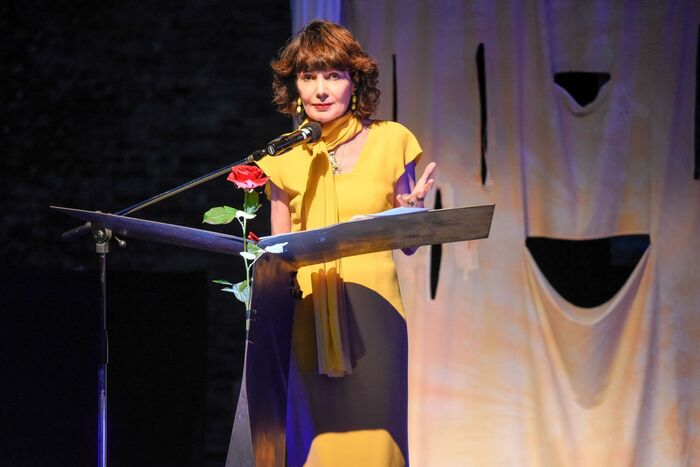The 1950s are considered the golden years of cinema - also in Brucker Land.
Numerous movie theaters shot up from the ground.
An exhibition at Jexhof now revolves around the history of moving images on the big screen, which sheds light on the period from the end of the 19th century to the 1960s.
Schöngeising
- Museum director Reinhard Jakob looks a bit like a circus director: He is wearing a bright red vest and a matching top hat when he steps up to the lectern at the opening of the “Lichtspiele” exhibition at the Jexhof Farm Museum.
The focus is not on the big ring, but on the big film.
The fact that Jakob still appears like a circus boss is due to the birth pangs of the film, as he reports.
Because when the new medium emerged at the end of the 19th century, it first had to assert itself against other leisure activities.
“This is where the name Lichtspiele comes from,” reported the museum director with a slight emphasis on the word “games”, which was supposed to get people excited about the cinema.
The special exhibition at Jexhof addresses this quickly aroused enthusiasm.
It tells the story of cinema, which began in 1896 with the invention of the cinematograph by the Lumière brothers.
Initially used at fairs, thanks to the mobile projector there were soon the first film screenings in traveling cinemas and taverns.
More and more cinemas
District Administrator Thomas Karmasin also recalled this at the opening of the exhibition: "In 1912, the Bichler-Bräu in Fürstenfeldbruck was the only one in the district to give two film screenings a day with a weekly changing program," said the district chief and then stretched the floor into the golden era of cinemas: cinemas shot up like mushrooms. "
This also applied to the Fürstenfeldbruck district, as Jakob and his employees found out: "During the preparation we found a lot of cinemas."
Or from the movie theater at Maisach train station around 1955, from the Central-Lichtspielhaus in Eichenau around 1949 and from the Capitol-Kino in Bruck around 1957 - cinemas that no longer exist today.
+
Ruth Strähhuber designed the exhibition rooms - she, too, came “disguised” to the opening of the exhibition, as the district administrator was pleased to note.
© Weber
In addition, the history of the still existing cinemas is examined, for example that of the Brucker Lichtspielhaus and the Gröben-Lichtspiele in Gröbenzell.
Despite this large number of cinemas, Jakob says: “I'm sure there were more that we couldn't find.” In addition, old projectors and film posters show which films were shown and how they were projected onto the screen.
In addition to the cinema as a hall, the Jexhof also focuses on the history of film.
Numerous actors from the Bruck region also played a key role.
Above all, Renate Müller should be mentioned.
The actress spent her childhood in the Wasserschlössl in Emmering before she was discovered by director Reinhold Schünzel for the silent film in 1928 and subsequently rose to become a star of the production company UFA.
Silent movie
Or you can find out more about the scriptwriters Franz Stefani and Reinhold Eichacker, who worked in Fürstenfeldbruck and Gröbenzell.
Jakob and his team were not limited to the district, but also switched to the neighbors in Inning (district of Starnberg), where the Schonger production company was based, and Graefelfing (district of Munich), where the Diehl brothers shot their puppet cartoons.
The exhibition rooms designed in black by Ruth Strähhuber also include a small cinema in which, among other things, the silent film “The Somme - Grave of Millions” is shown, which was shown at the opening of the Bruck cinema.
The exhibition is rounded off by an accompanying volume of more than 180 pages, in which authors have packed their enthusiasm for the film and its history into stories that are well worth reading.
There was also another reason for enthusiasm: namely, that on Thursday evening at Jexhof, a face-to-face exhibition could finally be opened again.
District Administrator Karmasin was happy "that we can meet again in person without imaging procedures such as online conferences".
information
The special exhibition "Lichtspiele - Kino und Film im Brucker Land from the beginnings to the triumphant advance of television" can be viewed during the museum's regular opening hours: Tuesday to Saturday from 1pm to 5pm and on Sundays and public holidays from 11am to 6pm.
The accompanying volume can be purchased in the museum.
Further information is available online at www.jexhof.de.








/cloudfront-eu-central-1.images.arcpublishing.com/prisa/UTO3W5M56JH3VJDETGVF72MBAM.jpg)






